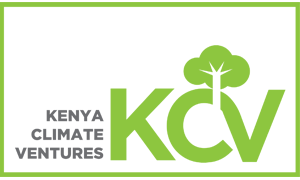It is no surprise that Kenya Climate Ventures, KCV, an impact investor in Kenya, has opened a window of investment for enterprises concerned about water sustainability in the country. The firm seeks to fund early – stage water enterprises to provide solutions that ensure sustainable access to affordable and safe water for domestic and productive use.
This may come as news to most of us, but the country is slowly drinking itself dry. Think of a delicious cup of Kenyan tea that requires 140 litres of water to travel from bush to table. That is nothing compared to beef, which requires 15,415 litres per kilo. If you flip it around it takes, roughly, water from two Olympic swimming pools to produce the meat from one cow. From our morning teas and steak dinners to the showers we have, all this consumption means that the average Kenyan alone uses 50 litres of water a day.
Africa is not water scarce, per se. The continent has more than sixty-two transboundary rivers, which cover 64 percent of its total land area. The irony is that only four percent of the continent’s available freshwater is currently being used. In Kenya, the situation is worse. With a population of 50 million, 32 percent of Kenyans rely on unimproved water sources, such as ponds, shallow wells and rivers, while 48 percent of Kenyans lack access to essential sanitation solutions. These challenges are especially evident in rural areas and urban slums, where people cannot get access to piped water infrastructure. This is set to only increase, mainly due to population growth, as the country’s population is predicted to reach 91.6 million by 2050.
This continually increasing need will draw on aquifers that have declined as water scarcity continues to pinch poor Kenyans. NASA has discovered that 21 of 37 of the world’s aquifers are currently being depleted. In addition, other freshwater sources are rapidly becoming polluted beyond repair. The Nairobi River, for example, has heavily polluted waters mainly from agricultural and industrial use.
Jacques Cousteau long ago pointed out that “water and air, the two essential fluids on which all life depends, have become global garbage cans.”
A significant issue comes from a lack of sustainable access to clean and safe water.
The lack of water is an often insurmountable obstacle to helping oneself. Water allows us to grow food, build houses, increase health benefits that allow us to function in our daily activities. According to the World Resources Institute, by 2025, it is estimated that 66% of the world will live in water-stressed areas. So, where do the opportunities and solutions lie? And what exactly is KCV investing in? The impact investor prefers innovations focused on both domestic and productive use of water in rural, peri urban and humanitarian settlements.
Victor Ndiege, the KCV chief executive officer says: “We believe that access to safe water is critical for life. Ensuring sustainable access to water is the way to go.
“Water entrepreneurship can support underserved markets and communities to improve their livelihoods and grow. This way, we an achieve both commercial viability in water supply, environmental and social impact that increases the value of water and reduces the mounting pressures on the resource, in turn accelerating sustainable water access.”
As part of its four year strategy, KCV seeks to invest US$ 50,000 – 200,000 in early stage water enterprises targeting rural and peri urban markets in Kenya. The firm will also provide technical support to micro, small and medium enterprises.
According to Mr Ndiege, water supply is important to achieving resilient communities. “If there is not enough water on the planet to go around, we need to create more. Investing in enterprises that help uncover new aquifers and sources of water; efficient wastewater treatment will help recycle much of what we already use.
“Investing in a circular economy to harness usable water ensures the agriculture, health sectors can provide optimal services to the population. Concepts like ‘water for health’ and ‘water for food’ require patient and tailored investments to actualise and support communities against the effects of climate change,” he says.
Although the Water Act of 2002 and later 2016 is anchored on non – revenue water, the struggle of water utilities with staggering losses in revenue, poor water quality and access and eventually abandonment of non – maintained water structures prompt a window of opportunity for the private sector. Fueling the interest is the current state of the public water infrastructure, which in many places badly needs an upgrade. Mr Ndiege argues that reducing non – revenue water will offer the country an opportunity to increase access to water, improve the financial viability of water utilities and private water supply systems and contribute to climate change adaptation.
Current models forecast water stress in many areas of the world in the years ahead while the United Nations has declared water and sanitation a human right. This is piling pressure on governments, which typically provide these services, to collect revenues – even if not optimal.
However, exorbitant fees and taxes are regressive and limit consumption by middle and low income citizens, infringing on their rights. Therefore, to make water a human right and meet the United Nations’ Sustainable Development Goal six (Clean water and sanitation) the country must be open, but not complacent, to private capital.
This article was first published on the Daily Nation











